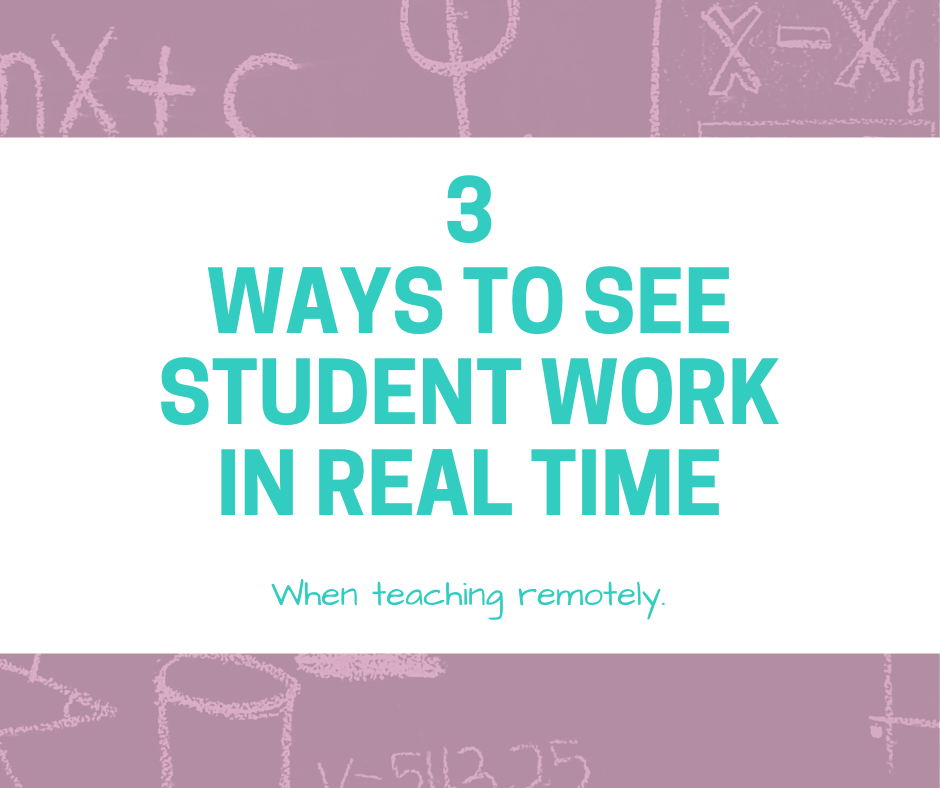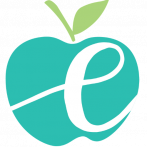
17 May 3 Ways to SEE Your Students Work In Real Time
One of the statements I’m hearing from teachers over and over again is how distance learning and teaching doesn’t ‘feel’ right because so much of teaching is listening to students, watching them complete tasks, interacting and asking questions, etc. Recorded lessons don’t have the same opportunities, nor do our paper packets.
I believe as we end this school year (for those of you not finished, try these suggestions this year! Now is a perfect time to experiment), and look forward to the fall, we should be thinking about how distance learning can improve in the fall from the deep learning curve we were thrown into this Spring. It isn’t going to be perfect, but it can definitely be better.
Take some time to reflect:
What did I like about what I tried?
What technology tools were successful for both me and for my students?
In what ways do I want to improve my teaching remotely skills for the fall?
What do I want to do more of in the fall?
What do I want to do less of?
Distance learning feels weird. It doesn’t feel like real teaching and that has been a pretty big obstacle for many of us. I’d like to challenge you to try at least of the strategies below to feel like you are doing the teaching you are proud of and that leaves you connected to students, providing timely feedback, and allowing students to engage in meaningful ways with content.
Try for live sessions. This may not be every day, but could it be 2-3 times a week? We know this is all that you will do, as we are currently struggling with getting all students to tune in, but with the ones who come live, we want to make it worth your time. Students and parents learn quickly what was valuable and what was a time waste. We have to make the most of our live teaching times to make them want to keep coming and showing up.
When going ‘live’ we don’t want to offer lectures. If they didn’t work in the classroom, they aren’t going to work online. Students need to be trying, exploring, defending, and reasoning. A student-centered classroom CAN happen remotely. So far, with our steep learning curve, I’ve seen so many teachers revert back to the way they were taught: direct instruction, step by step, etc. A student-centered classroom revolves around student ideas and teacher’s questions. We can still have these types of classrooms without being the sage on the stage, through distance learning. It isn’t just about the teachers showing his/her screen. It’s about US seeing the student’s screen, work, etc. in real-time to make those split-second decisions that make our instruction effective.
Try:
- A shareable whiteboard feature such as Jamboard or Whiteboard.Fi. Google Jamboard is an expensive piece of equipment OR you can just get the app in the google store/ itunes store, etc. An easy video is here. These are valuable tools in that students can use their own whiteboard, but the teacher can ‘share’ the student whiteboard with the whole class or just check in with each student’s work as they are working. It doesn’t involve holding pictures up to the screen. Students do work independently while in session (or out) and the teacher is able to see each student’s work (just as you would in the classroom). The teacher is then able to give feedback to students, write on THEIR screens, or select and sequence work to present to students for deeper discussion, error analysis, etc.
- Take advantage of the annotation tools in your online platform. Zoom, Webex, and Google Meet for starters allow the host to give students annotation rights. This allows students to mark up your screen in real-time. I recently did this with a group of kindergarten students. I shared an image with oranges (see below). I asked students how many oranges did they see and could they explain how they saw them? Because students had their cameras on, they could raise their hands when they were ready to share their answers. I called on students to share their thinking and gave them annotation rights. As they explained their thinking, they counted and circled the oranges on my screen. What a great tool to see their thinking!
- Utilize google slides and documents. Google documents are like Microsoft programs (Word, PowerPoint, etc), the difference being they are host on the internet. They are considered ‘live’ documents and links can be shared with students. This allows you to share your screen but each student also has the link open in another window (ex: one window is their zoom session, one window is their google document you sent). I’ve also been using this tool A LOT with kindergarteners (they’ve been my target group the last two weeks) and they rocked it! I used google slides, gave each student their own slide number (looked identical to their classmates), introduced an activity, then had students work on their own slides in real-time. As they worked, I could see them working, provide feedback, stop to discuss, etc. They did amazing after a little training on how to use the slides, and it was totally worth the training time. I chose to make my own manipulatives on their slides, so they were building their math stories, equations, etc. with manipulatives and I could watch! You only need access to google (seriously, just type google into your search bar). If you have a Gmail account, you already have ‘DRIVE’ where you can create docs, slides, etc. If not, it is very easy to start AND IT IS FREE.
What else have you done to successfully work WITH students online? Would you like additional support with the tools above? I’m providing remote learning professional learning to help teachers learn these valuable platforms by modeling how to teach a live lesson with students remotely. We will learn the platforms or tools of your choice, practice, and give you activities to integrate them with your students. August and summer sessions are booking NOW, so reach out if this feels like a good fit for you, your team, or your school. WE CAN DO THIS.
Here’s what some of the teachers in my Spring sessions have said:
“[With this training]I will be able to make math more engaging as students can have manipulatives like they do at school.” -Heather C.
“This training helped me to see that students can continue to learn math talk skills during distance learning.” -Sarah
“It’s so helpful to have materials that match our Math Expressions lessons and what students know from the classroom. I will use these slides during my teaching videos and can ask the same questions that we used in quick practice/daily routines and know that students know how to respond at home and that they can record themselves and send it to me.” -Zonna B.
“I was blown away with the information and resources that I got in a 1-hour training. Shannon has a wonderful passion for teaching and coaching teaching. She created great resources that are user friendly for the kids and teachers.” -Amy M
“Shannon’s webinar provided many ideas, examples, and resources to support distance learning. It also helped me to see how to “deepen” my math instruction while being physically apart from my students.” – Amy R.
My advice is to take one of the tips above and DIVE IN. If you’d like my help, I’m here, but otherwise dive in and just start playing and learning. All three of these options will come handy in each content area. In a teacher’s Facebook group I belong to, the question was asked how many people received PD for distance learning. More than 70% of teachers replied either none, limited, or were just given a list of tools. Only approximately 30% of the list felt they were really trained on how to use these tools or how to effectively give instruction online. In the spring, we had limited time options. But, let’s do better for the fall. We’ve always had summer or back to school PD. This is our chance to make it meaningful for the world we are living in.
In distance learning, students CAN:
Reason, defend, and hold math conversations.
Think, try, and receive immediate feedback.
Use manipulatives and visuals to defend thinking.
We CAN do this! Let me know how it is going for you, what your favorite tools have been, and about your successes and concerns.



Sorry, the comment form is closed at this time.